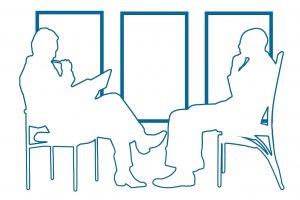
Online shopping is becoming an increasingly popular outlet for shoppers to flock to. With 40 percent of the global online user base involved in online purchases, and sales increasing by almost 20 percent; businesses are shifting their attention to ecommerce platforms.
This market change makes for a highly competitive environment since your competitor is just a click away. You can offer quality items at great prices; but this is only one piece to the puzzle.
Therefore, in order to stand out, ecommerce businesses need to know what to incorporate into their site to maintain a loyal customer base and presence. Here are 5 universally recognized best ecommerce design practices to make for a powerful and successful user experience:
First Impression
When someone enters your site, you need to immediately hook them with a compelling call to action statement. It can be a short phrase or a few sentences, as long as you illustrate what your company is all about and why the customer should be interested. It is also wise to think about the placement and design of your signup and social media button links; so they are aesthetically pleasing and jump out.
Businesses typically ask a customer to register to their site. If you ask the user to sign up before a purchase, no one wants a long informational list. Make the process easy as you only need to know their email and password to begin with. A clever way to increase customer satisfaction is to ask if they want to register after a purchase in order to make their next shopping experience hassle free.
It Starts with the Looks – Sleek Design
Lets say someone is browsing on Google to find a promising site to purchase a new shirt. They find your business and as the page loads their eyes are greeted with a bland page covered with content clutter. This is a great way to have your customer click out of your site.
In this day in age the buyers appreciate a minimalist web layout that presents a welcoming, clean atmosphere. Some thought should be put into styling the frame and layout of your site; as it will embody your business’s core theme and culture. Content is one way to illustrate who you are, however the other side of the coin is presenting a mood. A slick layout appearance that makes use of enticing images, which clearly showcase your items, along with clear typography, is a good way to start. An example of an ecommerce site that uses a creative and sleek style to its benefit is the Italian ecommerce startup ITLY. Other things to factor in are color scheme and picture choices for static and interactive items such as buttons and background options.
Usability
Nothing shuns a customer away from your site to never return again than web features that are not intuitive and don’t work well. A guaranteed method to make for a great user experience is a navigation path. Your site’s virtual breadcrumb path should be intuitive for the user. They shouldn’t have to work very hard to find exactly what they want. Freepeople, an ecommerce site for clothing accessories is a clear example of doing it right, with simple and crisp navigational elements.
Once a user finds an item of interest, all relevant product information should available in a clear and concise manner. If the item description is brief, there should be links to customer reviews, live chat options and/or media galleries if the customer wants to know more. Lastly, the entire buying process should be streamlined with a one-step checkout process, making item discovery and checkout speedy quick.
Security and Ease of checkout
Gaining the customer’s trust is key to a sale. Before a buyer even gets to shopping; it is always good business etiquette to reassure you’re the customer of their security. It can be as simple as menu link to a privacy page or a small sentence reassuring the customer that they are in a safe place.
Lastly, during the checkout process, the steps need to be simple while giving the customer enough options to maintain a sense of control. You have gotten the customer to the last step of the sale, to keep them from running away, be forthcoming and transparent by not having associated hidden fees.
Conclusion
Designing a great user experience for your ecommerce site is by no means a walk in the park, otherwise every business would have a well-crafted website. The process involves a lot of moving parts; fortunately there are tools at your disposal to make your particular sites flavor meet the needs of your customers.
Digital & Social Articles on Business 2 Community
(354)








